One of the most common questions I get from clients is how to get better results with SEO. While the answer can sometimes be complicated, there are some actionable steps you can take to improve your site’s rankings.
13 Steps To Improve SEO
- Perform A Content Audit
- Optimize For Featured Snippets
- Target Long-Tail Keywords
- Get High-Quality Backlinks
- Create Custom Images And Visuals
- Update Top-Performing Content
- Improve Mobile User Experience
- Review Internal Links
- Improve Core Web Vitals
- Fix Broken Links
- Focus On Local SEO
- Get Links From Unlinked Mentions
- Track SEO Metrics With GSC
1. Perform A Content Audit
The first step in improving your SEO is to review your existing content. This is a necessary step for several reasons:
- To protect your website from helpful content and core updates - Having outdated content on your website can be considered unhelpful and can damage your Google trust and overall Google rankings.
- To spot hidden opportunities - these are pages already ranking in positions 5-10 of Google. Improving these pages can increase your traffic without publishing new content.
- Avoid keyword cannibalization - having similar content targeting different keywords can confuse search engines and users.
Update Old Content
To perform a content audit, start by identifying pages that haven't been updated in over a year. For each page, consider optimizing content to align with search intent, refining the format for better readability, and enriching it with engaging visuals.
Review these for outdated elements (images, statistics, broken links) or other areas that need enhancement.
Refreshing these pages significantly is crucial as it can provide a "freshness boost," potentially improving their search performance.
For example, this post you're reading now was initially written years ago but has been rewritten to match the search intent and update the content with the last SEO practices.
When you make significant changes to a page, ask Google to reindex your content.
Improve Rankings of Existing Pages
A great way to improve your SEO without publishing new content is to use Google Search Console to find pages with high impressions but low CTR. These are usually pages that rank in positions 5-10 on Google.
- Go to Google Search Console and view the "Performance on Search Results Report".
- Click the PAGES tab to view the results by page.
- Click the IMPRESSIONS column to sort the results by the number of impressions.
- Click the AVERAGE CTR box to show the CTR next to impressions.
- Click on Pages that have high impressions and a low CTR.
- Click the QUERIES tab to analyze each page individually.
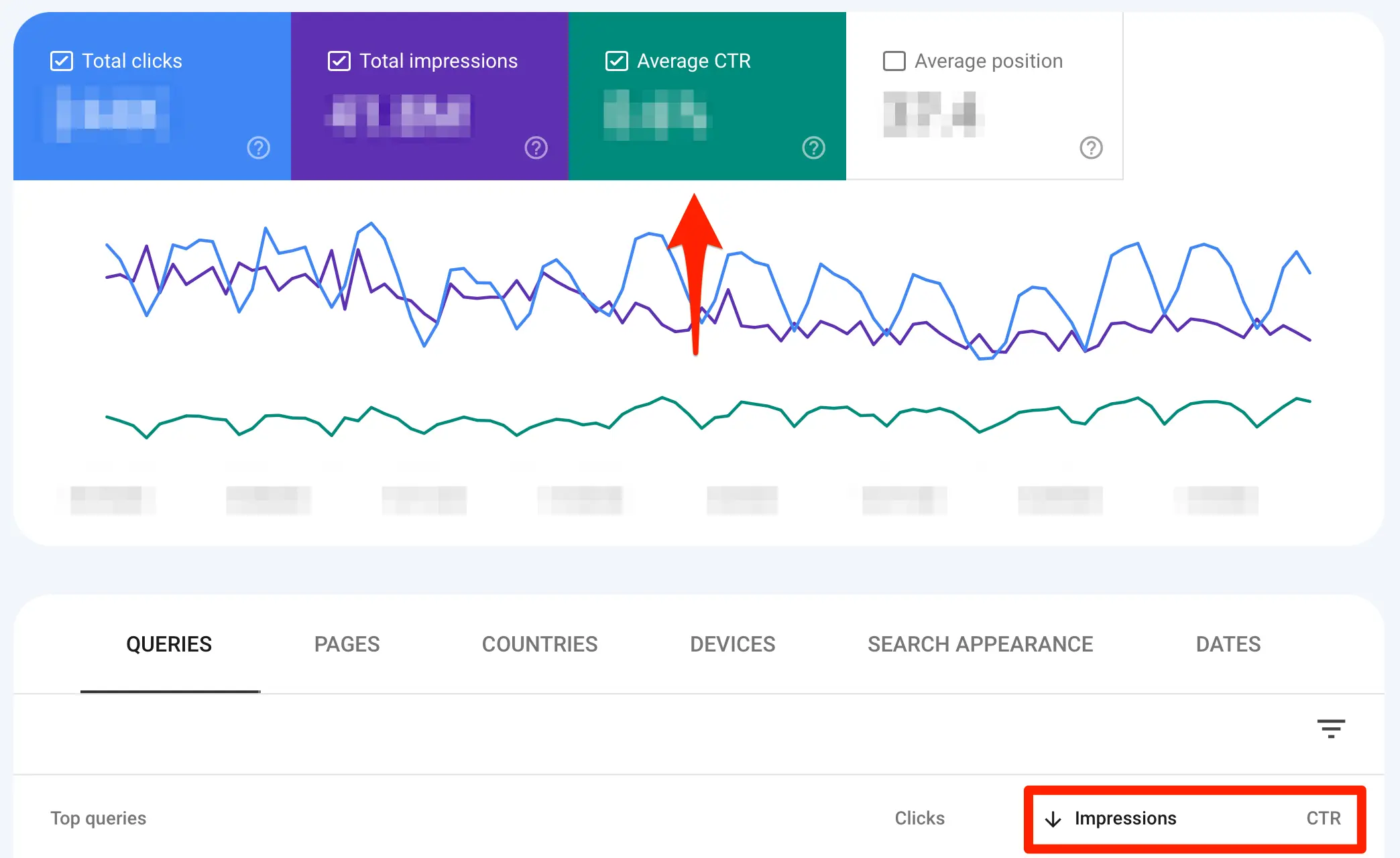
Look for which queries a page appeared in the search results and edit your content to include those keywords (and related) a couple of times in the content. You may have to adjust your page title and headings to make the content more relevant to the search queries.
Once you're done, ask Google to reindex the page.
This simple process can help you improve page rankings, increase CTR, and get more traffic.
Keyword Cannibalization
While reviewing your content, if you find pages with similar content but target different keywords, consider merging them into one and use a 301 redirect to inform search engines.
For example, during our content audit, we found that our "SEO Fundamentals" post was similar to our "SEO Basics" post.
Searching on Google for these two keywords revealed that Google considers the user intent the same.
To avoid keyword cannibalization, we merged the pages and added a 301 redirect from the "SEO Fundamentals" page to our SEO Basics page.
2. Optimize For Featured Snippets
Another way to get more traffic from your existing content is to optimize your top-ranking pages for featured snippets.
Featured snippets appear on top of the organic results, get more traffic, and help the brand reputation.
Here is an example of a featured snippet.
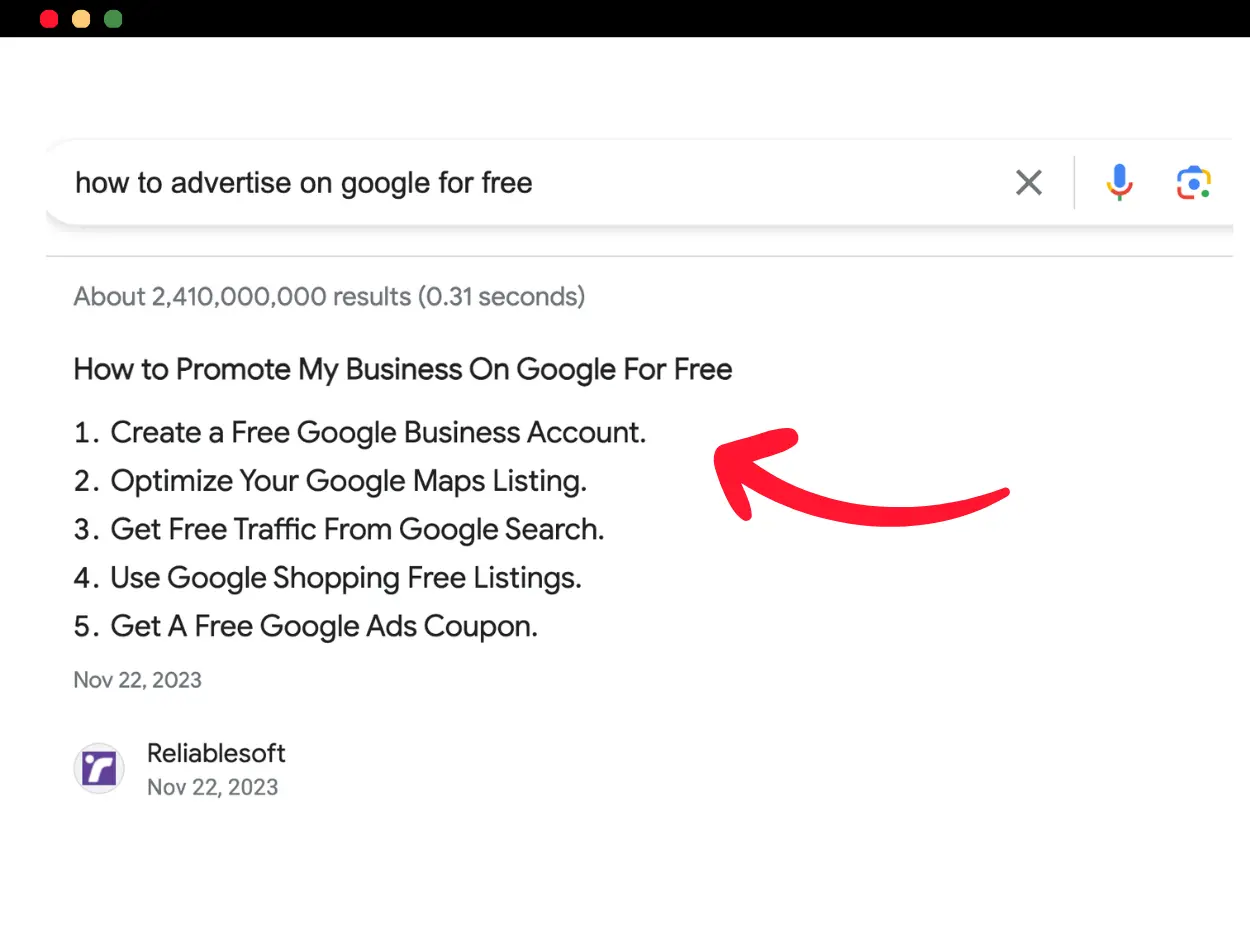
Optimizing your content for featured snippets is a straightforward process. Use these tips:
- Find for which keywords a page is ranking.
- Use Google to see which queries show a featured snippet.
- Structure your content for the particular featured snippet format.
Read our post on How To Get Google Featured Snippets for step-by-step instructions.
3. Target Long-Tail Keywords
The next step in optimizing your SEO is to revise your keyword research strategy and find new keywords to create content.
Instead of solely focusing on popular, high-competition keywords, diversify your approach by incorporating a mix of primary and long-tail keywords. This will allow you to achieve more top rankings, increase your organic traffic, and improve your Google trust.
Long-tail keywords are more specific and less competitive with specific intent, making them valuable for any SEO strategy.
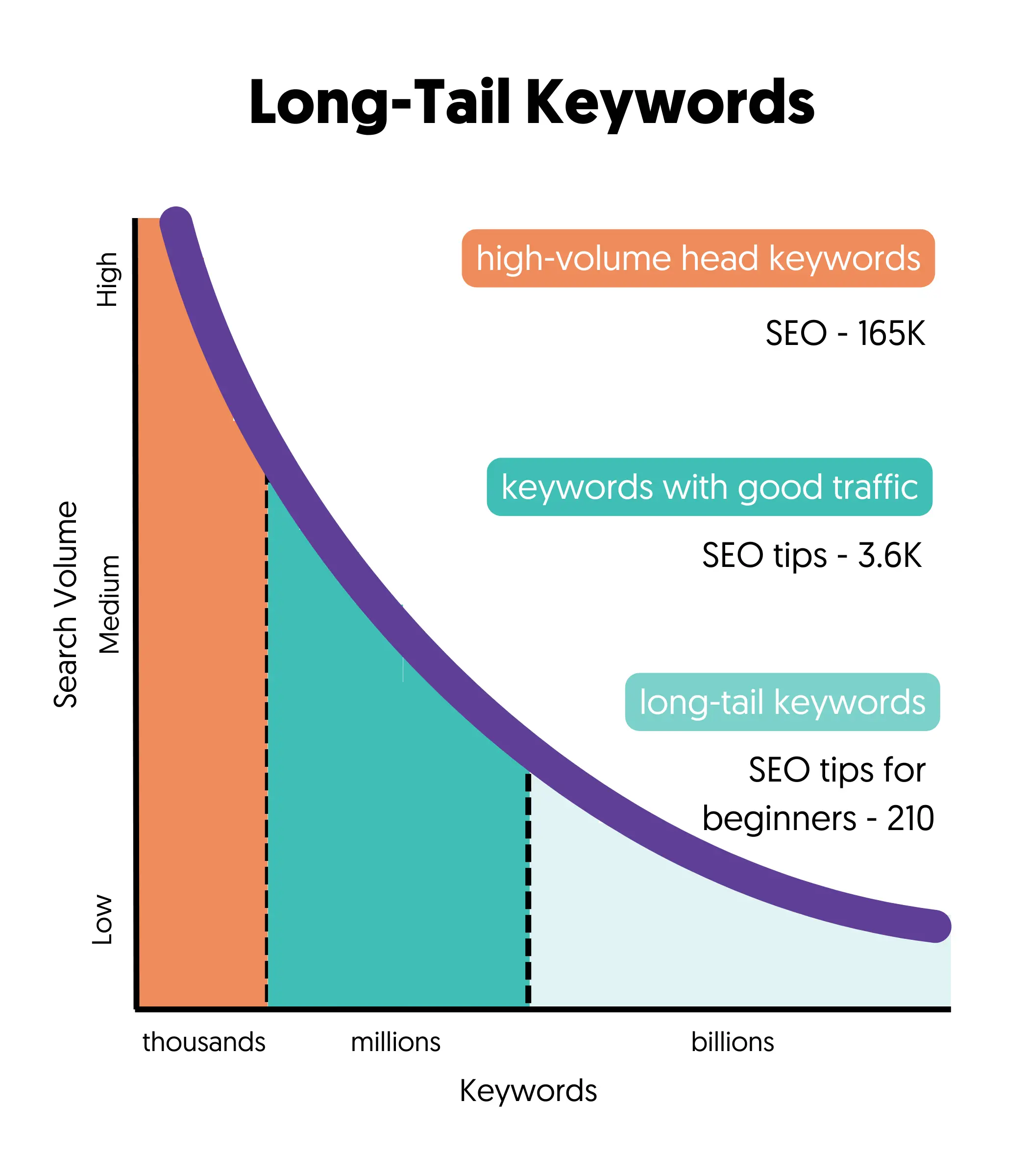
To find the right long-tail keywords, search Google for a primary keyword and look at the "People Also Ask" and "Related Searches" sections. This will give you a very good idea of your niche and help you spot the specific queries your target audience is using.
You can also use a keyword research tool to surface long-tail keywords where the keyword difficulty is manageable, yet the search volume is substantial enough to drive traffic.
4. Get High-Quality Backlinks
Despite the many changes made to its ranking algorithm by Google, one proven way to move the needle and increase your visibility in search is backlinks.
From experience, this is also a step that many webmasters ignore because it's challenging to execute.
What you should do is use link-building strategically. Instead of randomly building links to any page, choose 3-4 pages that you want to improve their rankings and focus your link-building efforts on these.
If a page suddenly starts to receive incoming links, this can raise some flags in the Google algorithm. If, on the other hand, a page consistently gets links, this will likely improve its rankings.
There are many techniques to build links, but the most effective are:
Creating content that naturally attracts links like case studies, research, and industry statistics. Promoting this content with digital PR, influencer marketing, and social media marketing can get you high-authoritative links that can make a difference in your rankings.
Use Help a Reporter Out - This service brings reporters together actively looking for information. They will link to your site if you can help them with a source.
5. Create Custom Images And Visuals
According to recent studies, the top 10 pages on Google have, on average, 34 images.
This number varies per industry, but it is clear that images help your SEO in various ways. The most important is making the content easier to consume for users.
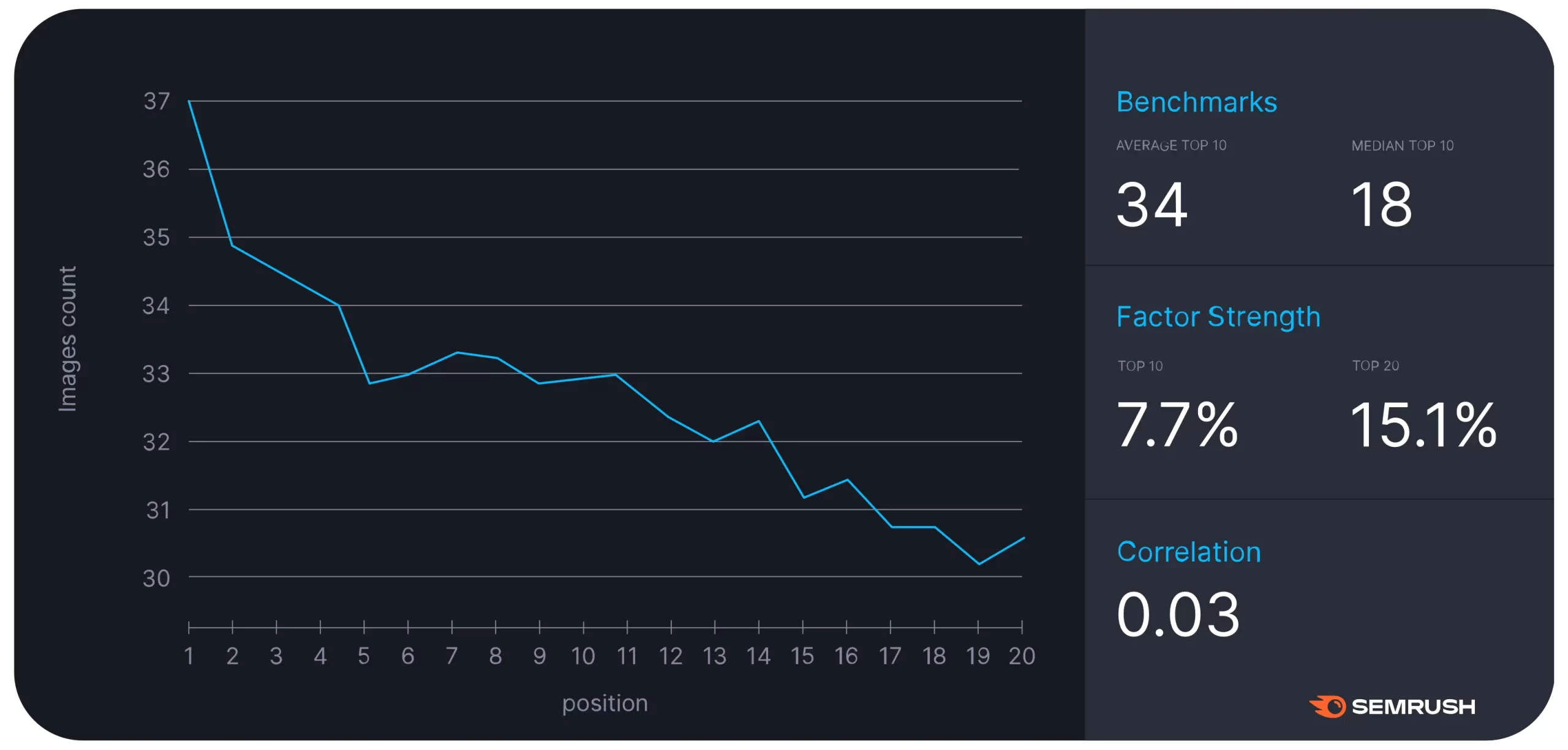
It's also a nice way to make your content better than competitors.
Follow these tips:
- Don't use stock images.
- Try to create custom images like screenshots to demonstrate a point.
- Use custom-made visuals to help readers read your content visually.
- Publish high-quality images. Low-quality images can discourage users from reading your content, producing the opposite results.
When adding images to your content, ensure that:
- You use the right image format (PNG or Webp is recommended).
- Images are compressed so that they load quickly.
- Images are relevant to the page content.
- Make use of responsive images so that they are mobile-friendly.
- Optimize the image ALT text by writing text that is descriptive, unique, and relevant to the images.
6. Update Top-Performing Content
Besides performing a content audit to update old content and publishing new content, you should pay special attention to your top-performing content.
If you don't regularly update the pages that currently bring traffic to your site, they will eventually lose their rankings. This is a mistake we see all the time when performing SEO audits.
What you should do is the following:
- Identify your top-ranking pages using Google Analytics or Google Search Console.
- Look for updated statistics, recent research, or case studies, and ensure all content reflects the current state of your industry.
- Revisit the keywords these pages are ranking for. Study what your competitors are doing and ensure the user's search intent hasn't changed.
- Spot any differences in content between your page and competitors and update the page accordingly.
- Revise your internal links and add links from older content to your top rankings pages.
- Improve topical authority by using a keyword research tool to find new related keywords, create the content, and link to your top pages.
7. Improve Mobile User Experience
When evaluating the SEO performance of a website, most people look at the desktop version, forgetting that Google uses mobile-first indexing.
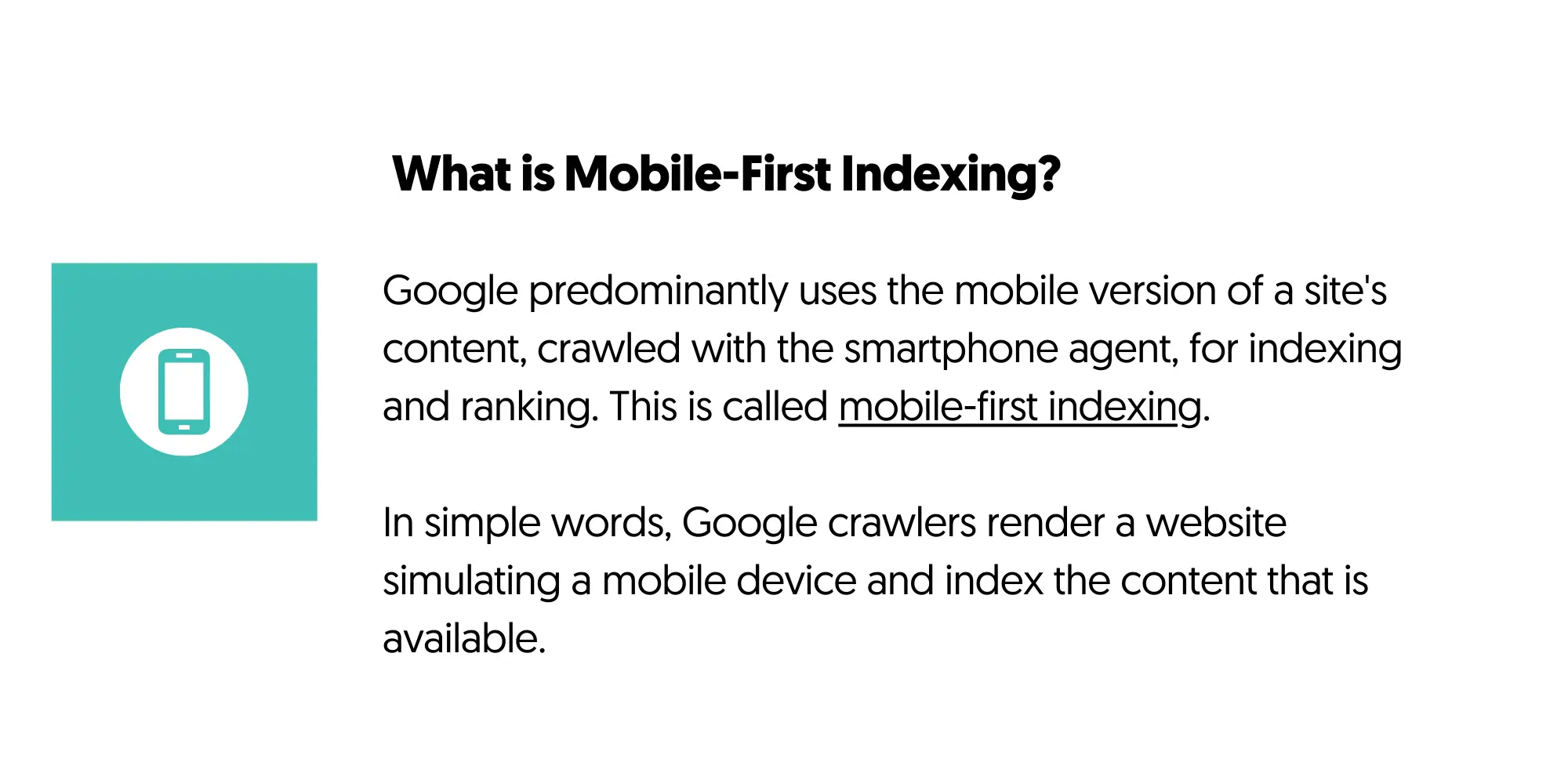
To improve your SEO, you should review the mobile version of your site and concentrate on mobile SEO best practices.
Things like:
- Formatting your content for mobile devices (bigger font, smaller paragraphs, high-quality images).
- Improving your mobile page speed.
- Optimizing landing page for mobile conversions.
- Providing users with a navigation system that is easy to use on mobiles.
- Avoid using intrusive popups.
- Optimizing content for mobile-rich results with structured data.
Are critical for the success of your website.
8. Review Internal Links
In your SEO strategy, never underestimate the power of internal linking. It's not just about connecting your content; it's about creating a hierarchy of information and giving Google an idea of your site structure.
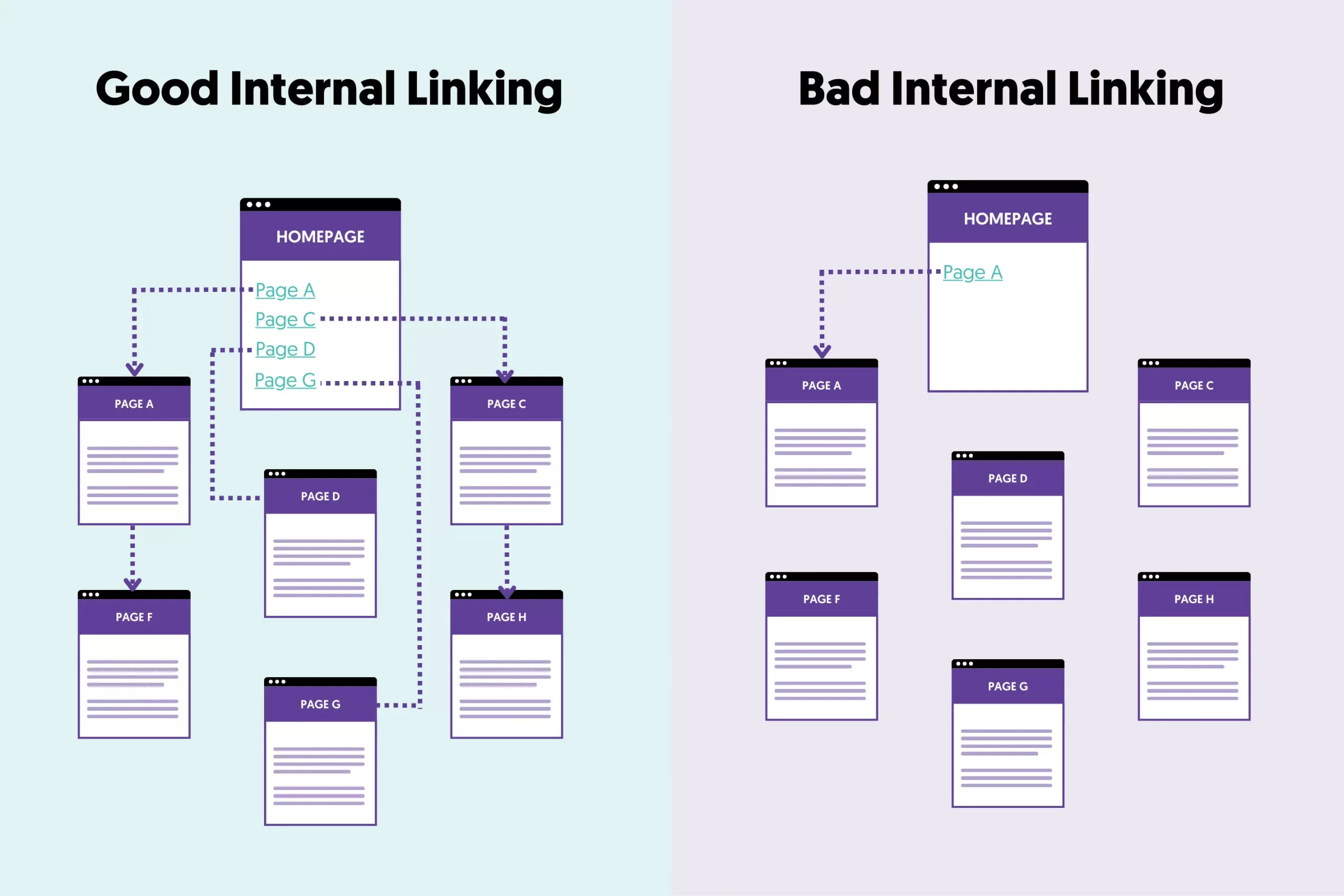
More importantly, it's about redirecting your traffic to the most valuable pages of your website. As we explain to clients, the goal of a successful SEO plan should not be to increase traffic but to find ways to get people to visit the pages that can generate leads, signups, conversions, or sales.
When reviewing your internal links, pay close attention to the anchor text. The anchor text should be relevant, descriptive, and keyword-rich, not generic like "click here".
As mentioned above, you should strategically link to your most important pages. By linking to these pages, you're funneling link equity and authority to them, boosting their importance and visibility.
9. Improve Core Web Vitals
Core web vitals is a set of metrics related to page experience. This new concept introduced by Google tries to measure how users perceive the experience of interacting with a website.
As a first step, review the "Page Experience Report" on Google Search Console and fix any issues.
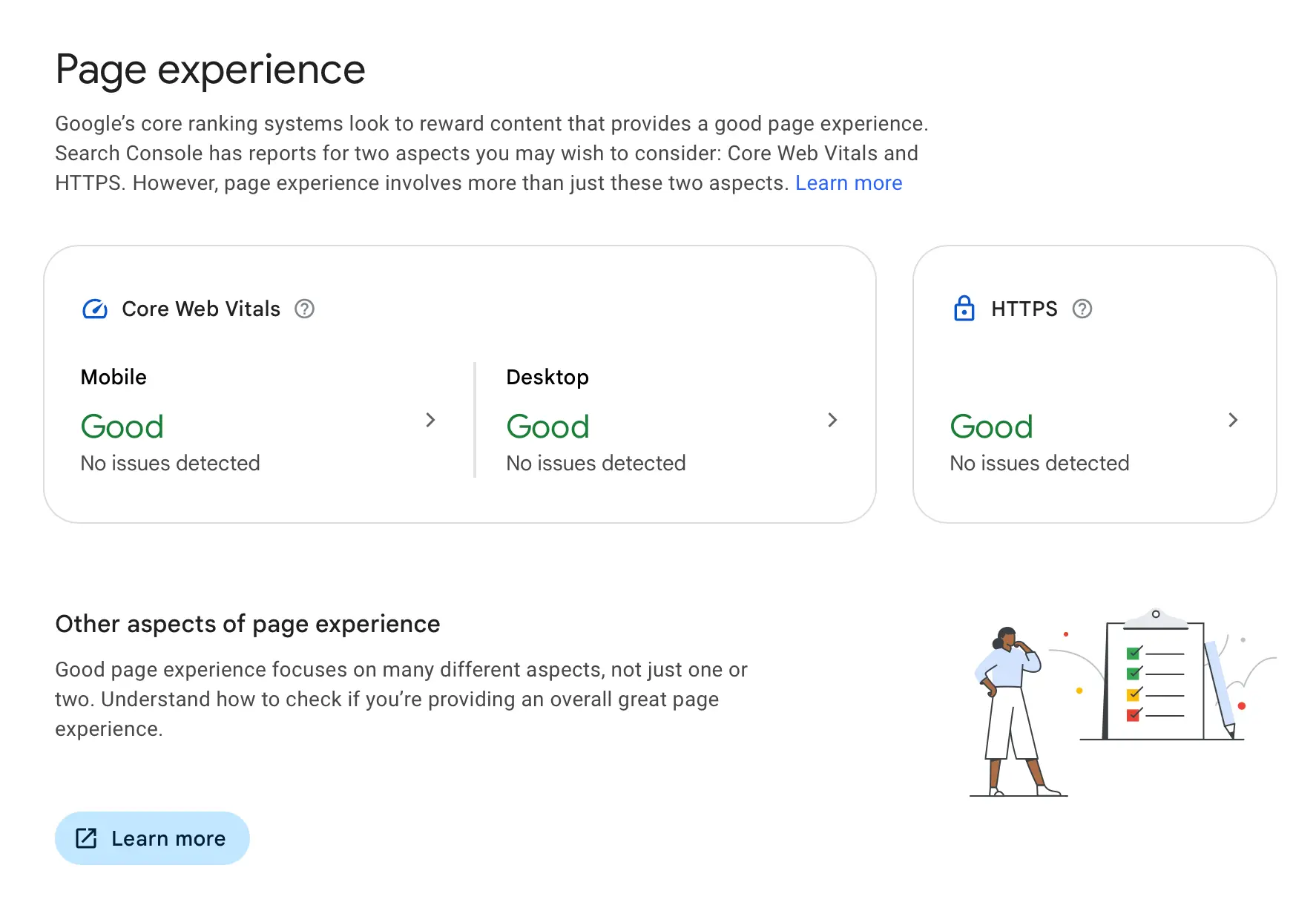
Then, use Page Speed Insights to measure different website pages and aim to get your core web vital scores within the accepted levels.
In most cases, websites fail to meet the requirements because of uncompressed images and excessive use of Javascript. If the reports show the same for your website, the best approach is to hire a developer to fix these issues once and for all.
If you're short on budget, configuring your website to use a Content Delivery Network (CDN) will most probably make things a lot better.
10. Fix Broken Links
If you haven't run a broken link audit before, your website will probably have broken links. This is normal because the web is dynamic, and websites change as they grow.
Broken links are bad for the user experience and your SEO efforts. Use an SEO audit tool like Semrush and run a broken link report.
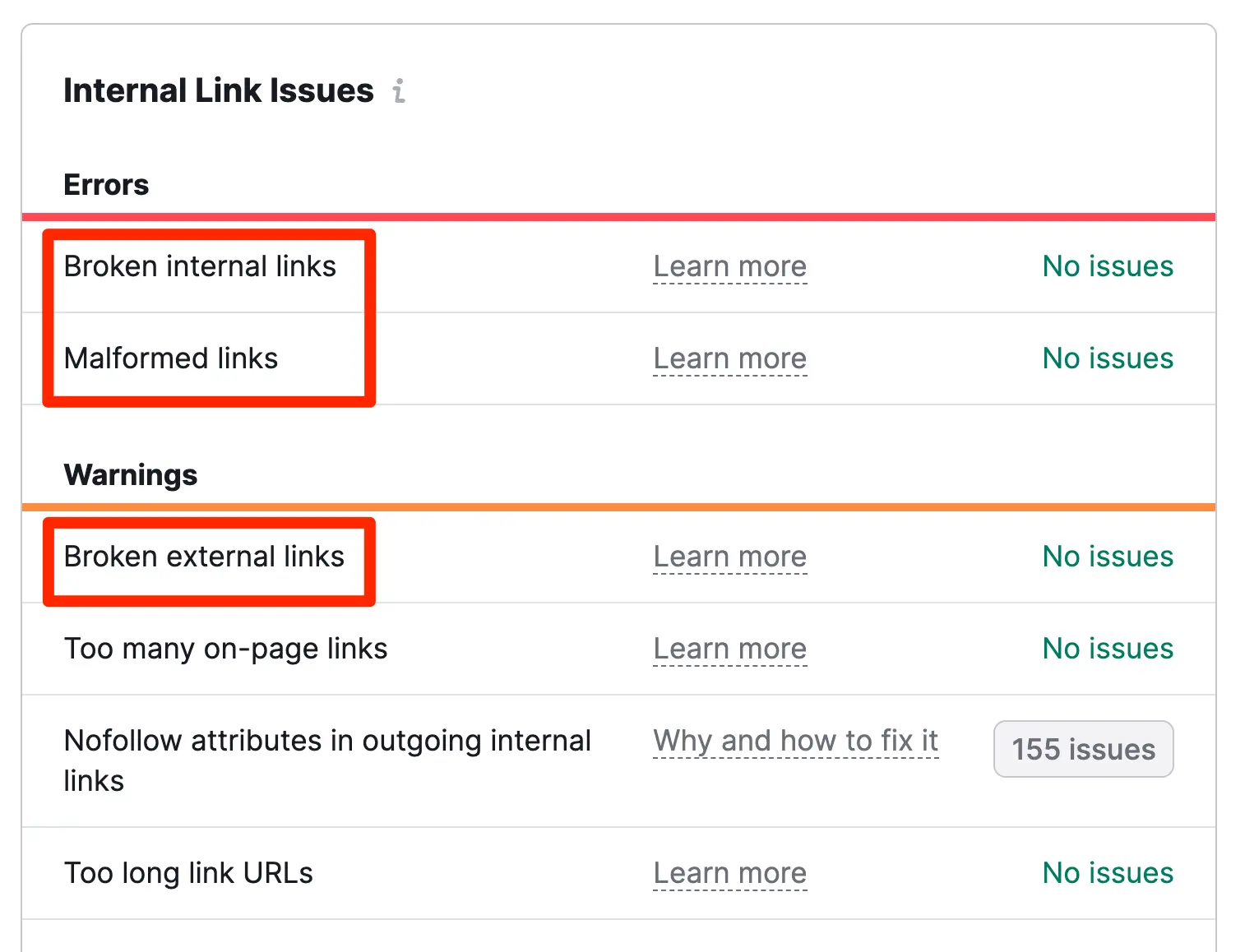
Look for three types of broken links:
Internal - links on your site pointing to other pages (on your site) that changed. In this case, either change the links to point to the correct page or add 301 redirections to redirect links to a valid page.
Incoming - links pointing from other websites to non-valid pages on your site. You can ignore these links unless they are coming from a valuable source. In this case, fix them using 301 redirects.
External - links on your website pointing to pages on other domains that do not exist. The best approach is to remove or point the links to the right page.
Don't omit this task. You'll be surprised by the outcome of running a broken link check.
11. Focus On Local SEO
One of the ways to improve SEO for local businesses is to focus on Local SEO. If relevant to your business, it can increase your visibility in Google local results and Google Maps for location-aware queries.
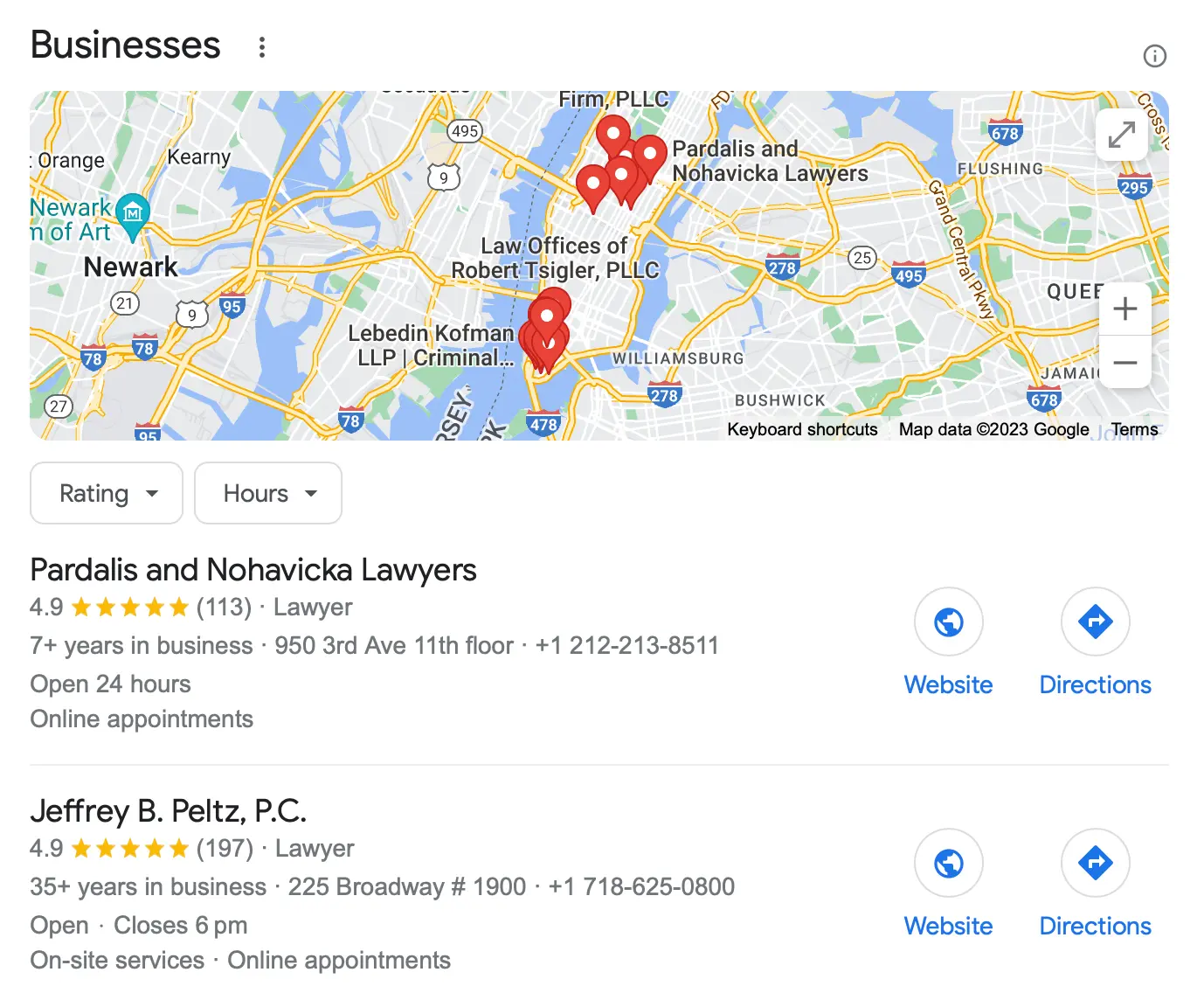
The best recommendations are:
- Optimize your Business Profile Listing.
- Target queries related to local searches in your content.
- Get positive reviews on your Google Profile page.
- Ensure your NAP information (name, address, phone number) is added to your website pages with the appropriate schema markup.
You can learn more by visiting our Local Online Marketing guide.
12. Get Links From Unlinked Mentions
A hidden way to get links that can influence your rankings is going after unlinked brand mentions.
Sometimes, your brand name is mentioned in a post without a link. You can use a tool (or Google) to find the unlinked brand mentions and ask the webmasters to change them to a link. The chances of your request being accepted are high since your brand is already mentioned in their content.
Here is how to do it:
Go to Google and search for [intext: "ADD YOUR DOMAIN HERE"] as shown below.
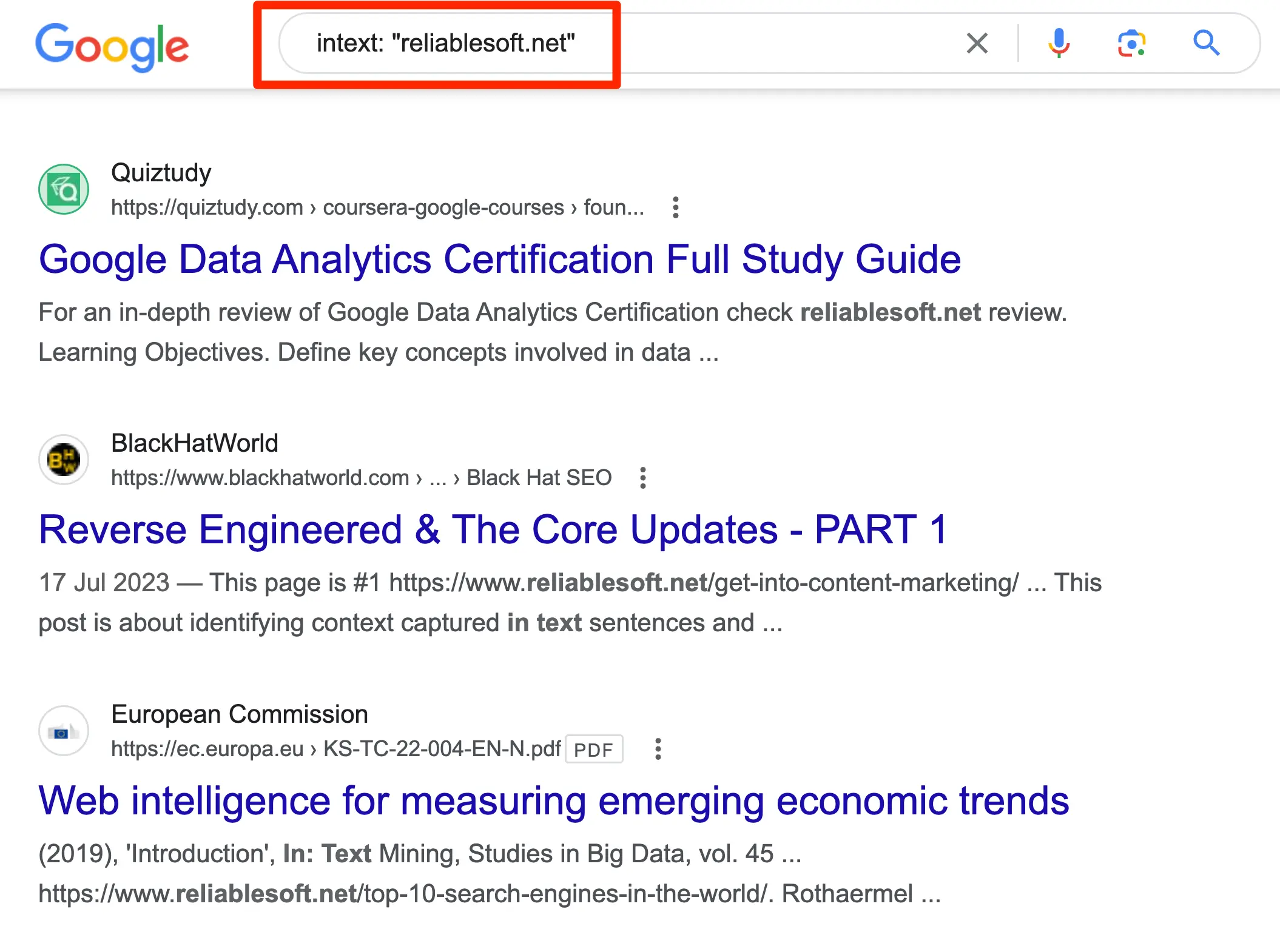
Visit websites that mention your brand without a link. Look at the content and contact them if a link seems appropriate in their content context.
For best results, try different brand name variations (besides your domain) to find all possible opportunities.
13. Track SEO Metrics With GSC And Analytics
Last but not least, if you want to improve your SEO, you need a baseline to compare your performance before and after making changes.
The easiest way to do this is by using Google Analytics and Google Search Console Reports. You can use Google Looker Studio to access your data in a more friendly reporting environment for the best results.
The essential SEO metrics to monitor are:
- Organic Traffic – Track the number of visitors visiting your site through organic search.
- Keyword Rankings – Monitor where your site or specific pages rank for target keywords.
- Bounce Rate – Analyze the percentage of visitors who navigate away from your site after viewing only one page. A high bounce rate might indicate your content is not meeting their expectations.
- Engagement Rate – Look at the engagement rate metric in Google Analytics reports. High engagement rates often reflect content relevancy and a positive user experience.
- Conversions – Track the number of visitors who take a desired action on your site, such as filling out a form, subscribing to a newsletter, or purchasing.
Before making any SEO changes to your website, create reports to track the above metrics. After making your changes, wait a few months and compare them with the new metrics. See what's improved and understand which changes led to better performance.
Other Ways To Improve Your SEO
Use the following guides and resources to learn more practices to improve your SEO further.



